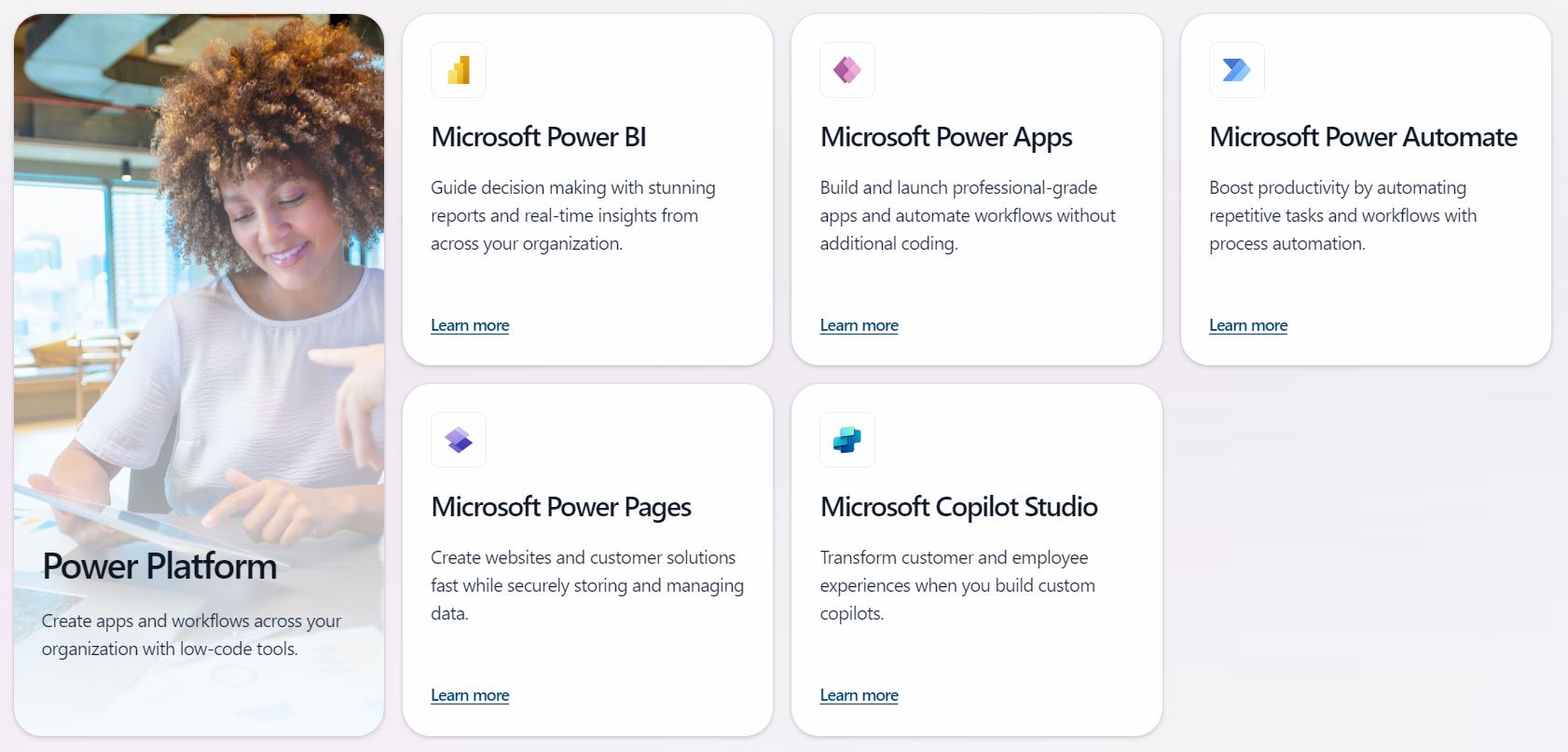Imagine a future where the power to develop an app no longer rests solely in the hands of IT departments or tech companies. Instead, everyday professionals, equipped with the right tools and knowledge, can create their own solutions. This future isn’t some far-off dream—it’s already happening. Believing that only IT will be able to develop apps in the future is like believing that only IT can create spreadsheets in Excel today. Why wait for a complex, time-consuming development process with your company’s IT team when you, the person who knows the ins and outs of the process, can build an app that works precisely as you envision?
Enter Microsoft’s Power Platform, launched in 2018. This suite of tools is quietly revolutionizing the way companies operate, offering solutions that have accelerated workflows, optimized processes, and reduced dependency on lengthy development timelines. The days of waiting for IT to get to your project or fighting for budget approval to buy expensive software are numbered. Today, if you need an app, you can easily build one using Power Apps—a low-code platform designed to simplify the app development process. While it has some limitations within the platform’s structure, it empowers non-developers to create powerful, functional applications.
Want to build a chatbot for your business, pizza shop, or customer feedback system? Look no further than Power Virtual Agents, another intuitive low-code solution. Need to wow your boss with real-time data analysis and deep insights? Power BI is the tool that puts advanced data analytics at your fingertips, enabling you to create detailed reports and visualizations with ease. And those tedious, repetitive tasks that take up too much of your team’s time—sending emails, managing approvals, processing documents—can all be automated using Power Automate (formerly known as MS Flow), perhaps the most transformative tool in Microsoft’s arsenal. With automation, you can slash operational costs and free up valuable time for more strategic work.
Now, before you think I’m here just to sing Microsoft’s praises, let me clarify: this is about the evolving nature of work. Just as there are many alternatives to Microsoft Office—like LibreOffice (which I use for personal tasks), Google Docs, or WPS Office on Android devices—there are also growing alternatives to Power Platform. While no competitor offers quite the same comprehensive package that can challenge Microsoft head-to-head, some solutions are gaining traction. For example, OpenXava is emerging as a competitor to Power Apps; Tableau, a data visualization favorite, is giving Power BI a run for its money; Zenvia is gaining attention as a strong alternative to Power Virtual Agents; and Zapier, with its seamless Trello integration, is a powerful competitor to Power Automate.
Speaking of Trello, a tool I rely on heavily for organizing my ideas and projects, Microsoft has been busy expanding its suite of tools to cover every aspect of modern productivity. Microsoft Planner, for example, is Trello’s sibling within the Office 365 ecosystem. And let’s not forget about Google Forms, which poses a significant challenge to Microsoft Forms, especially given the massive influence of Silicon Valley’s tech giant on the market.
I’m reminded of the mid-1990s, back when I was taking typing classes and learning the ropes of Microsoft Windows 95. The big talk at the time was that if you didn’t know how to use MS Excel, you wouldn’t stand a chance in the job market of the future. Fast-forward to today, and those who have mastered Excel enjoy a wealth of opportunities, though some roles still don’t require it. The takeaway here is clear: in the not-so-distant future, those who lack expertise in Power Platform will face similar challenges to those today who lack Excel skills.
Microsoft, which transformed the way we work with its Office suite decades ago, is now driving a new wave of workplace innovation with Power Platform. The skills required by today’s job market—proficiency in Microsoft Office or similar software—are gradually being replaced by the need to master Power Platform or its competitors. The future is coming quickly, and it’s bringing a new set of demands for the modern professional. Will you be ready to meet them?
